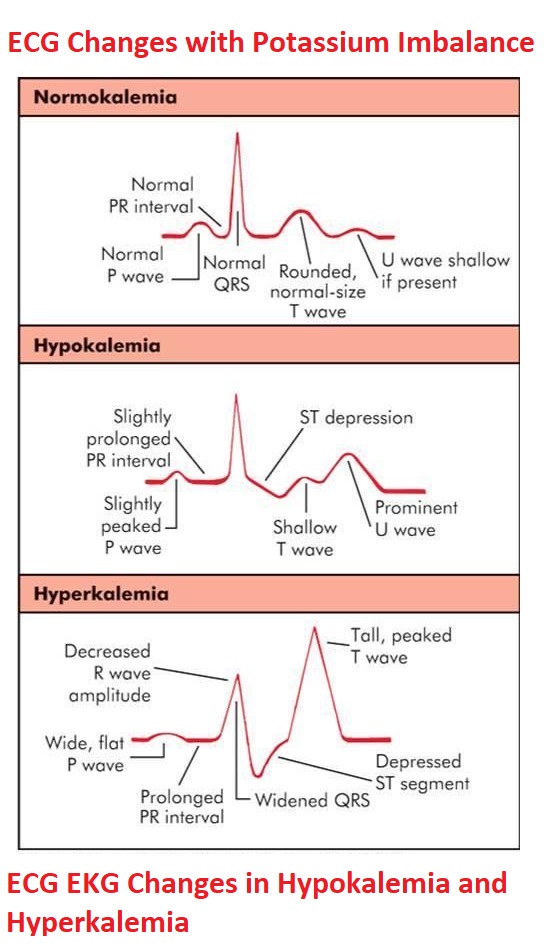ECG/EKG Changes in Hypokalemia and Hyperkalemia
ECG should be done on patients with hypokalemia. Cardiac effects of hypokalemia are usually minimal until serum potassium concentrations are < 3 mEq/L. Hypokalemia causes sagging of the ST segment, depression of the T wave, and elevation of the U wave.
Early ECG changes of hyperkalemia, typically seen at a serum potassium level of 5.5-6.5 mEq/L, include the following: Tall, peaked T waves with a narrow base, best seen in precordial leads. Shortened QT interval. ST-segment depression.
Although it is much less common than hypokalemia, hyperkalemia is much more dangerous, and when unrecognized or untreated it may result in cardiac arrest. Hyperkalemia is generally caused by decreased or impaired renal excretion, the addition of potassium to the extracellular space or transmembrane shifts of potassium.
